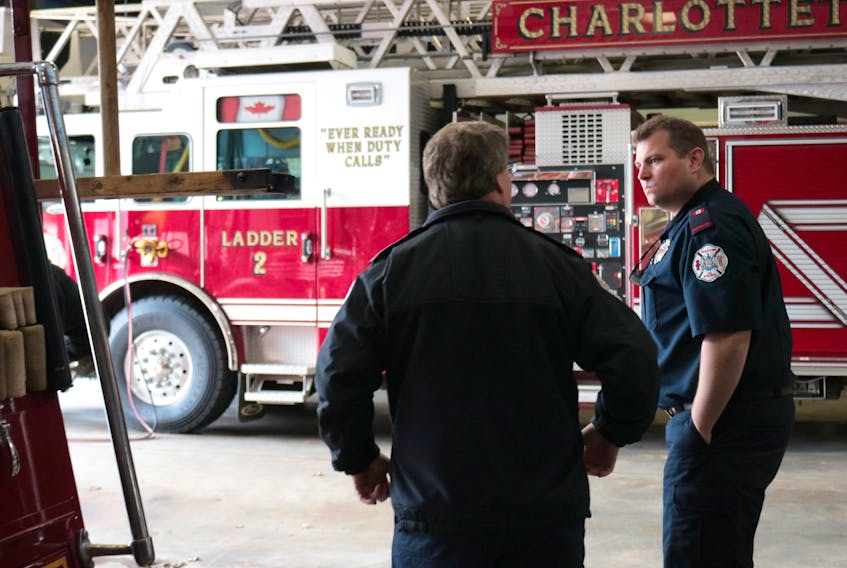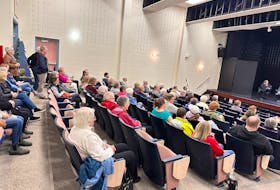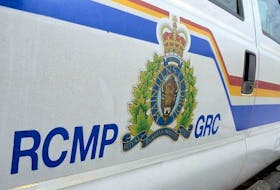CHARLOTTETOWN, P.E.I. — In 2018, the Charlottetown Fire Department responded to its highest number of calls in a decade, statistics released from the city suggest.
Where they received 420 calls in 2009, fire chief Randy MacDonald’s crews attended 771 in 2018. But while some were for legitimate emergencies, many of last year’s calls were quickly debunked as false alarms.
“Half the time, in the middle of the day, I’ll get all the way downtown and just get directed to the station,” said Brittany Cole, a volunteer firefighter who works a desk job in West Royalty. She said that by the time she’s nearly on-scene, calls are often either dealt with already or the department has rerouted her because it doesn’t want to make traffic worse for crews en route to the scene.
Nonetheless, more calls have meant greater demand on the department’s resources. In response, council has earmarked nearly one million dollars in the 2019-2020 city budget for a replacement fire engine and has set aside an additional $100,000 to design a third fire station. The new station, which has been debated during municipal elections for nearly a decade, would serve the neighbourhood of West Royalty and area.
City council is still waiting on a cost estimate for the station before confirming that it will be built.

Coun. Bob Doiron, chairman of the city’s Emergency and Protective Services Committee, said council is currently considering hiring more full-time crew as well.
While staffing has grown, MacDonald said that volunteer numbers over the last decade have remained stable around 70, a number that he said is sufficient for the amount of work. Two career firefighters were hired in October 2008 and one fire inspector was hired in 2014, bringing the complement to 77 volunteer firefighters, eight career firefighters, one seasonal firefighter (also a volunteer), nine casual firefighters (who are also volunteer firefighters as well as backfill for career firefighters), three career fire prevention staff and three administration staff.
“We don’t see where we’re getting overrun or taxing our resources,” MacDonald said of his crew’s ability to cope with the rising number of calls.
eyond fire awareness, MacDonald and Doiron agree that the city’s sheer size has also led to more outings.
“I think calls that are coming in have certainly increased due to the amount of the people,” said Doiron.
The city has welcomed 4,000 additional residents over the last decade. In that same time frame, over 1,000 new private dwellings have been built, meaning that there are now more people in more houses to trigger more alarms than there have been in the past.
Candles, cranks and cooking alarms
Out of 771 calls to the Charlottetown Fire Department in 2018, approximately 41 per cent were non-events or what MacDonald calls “a necessary evil in the business”. In the 313 false-alarm cases, alarms were set off by sensitive, malfunctioning or otherwise accidentally triggered fire and carbon monoxide alarms.
Other times, firefighters were called away to gas leaks, car crashes and other emergencies.
Fire crews responded to 55 EMS-related calls last year—nearly eight times as many as it did in 2009. MacDonald suggested that his firefighters may be covering for ambulances that are on duty outside of the city. According to Island Emergency Medical Services, the organization that operates all ambulances in P.E.I., demand on their services has gone up by approximately 70 per cent in the same time, provincewide.
Pranksters amplified demand on the department, too. Charlottetown firetrucks were sent out 21 times in response to “malicious” or “mischievous” calls with no real alarm, according to the department’s classification. Under the province’s Emergency 911 Act, it is illegal to “place a false, frivolous, or vexatious call to the number ‘911’.” If caught, first-time offenders could be charged with a fine ranging from $500 to $2,000. Repeat offenders could net a $5,000 fine or six months in jail.
Accidental alarms don’t net the same price, just embarrassment sometimes, MacDonald said about cooking-related fire calls. Those have more than doubled since 2009, when only 31 such alarms were raised. Last year, the Charlottetown Fire Department responded to 91.
Cooking-related alarms in apartment buildings can be even more disruptive because when smoke triggers a unit’s alarm, unfortunate chefs tend “to open up windows and doorways and start waving a dishtowel” to disperse the cloud, MacDonald explained.
But when people open their doors to shared hallways, the building-wide system can start blaring, setting up an awkward situation after everyone is evacuated and accounted for.
“Sometimes people are a little embarrassed to admit that they burned their meal,” MacDonald said.

Other notable fire department calls in 2018
- Removal of victims from stalled elevators: 10
- Water- and ice-related rescue: 4
- Animal rescue: 3
- Alarm system activated by user error: 48
Actual fire calls, including cooking alarms, only accounted for 177, or just under a quarter of all calls in 2018. That part has been the most surprising part of the job for Cole.
“When you join the fire department you think, ‘Oh yeah, I’m going to get to fight fires,’” she said.
But three years into her service, Cole has only seen three large fires.
One of her first blazes came in September 2016, when flames and black smoke began pouring from the roof of an apartment building at the corner of Euston Street and Prince Street.
“It wasn’t abnormal,” said Cole about getting the rare call for a building fire. “It didn’t feel like something we didn’t know how to do.”

The building’s owner, Ole Hammarlund, said the 2016 fire started on a second-floor deck, where building codes don’t mandate smoke alarms or sprinkler systems. It took the flames an hour, he estimates, to burn through the exterior wall and trigger the sprinklers.
As a landlord and an architect, Hammarlund said that “one of the most important things you have to always think about is how do you get out of here fast?’ (And) how do you get woken up if there is fire?”
Hammarlund said that individual unit smoke alarms and building-wide fire alarms in the old YMCA building-turned condo complex are very sensitive to any disturbances.
“(The smoke alarm) goes off it there’s smoke,” said Hammarlund, “but it also goes off if my wife takes a bath with a lot of steam or if I burn my toast.”
For the building’s connected fire alarm, Hammarlund said that dust from construction in the hallway tripped the system twice in the same year. Once, he was able to call the alarm company and cancel the call; the other time the fire trucks showed up. (The fire department saw six “dispatched and cancelled en route” calls in 2018).
For MacDonald, false alarms from things like construction dust, steam and other triggers are beneficial. They show that the fire department’s emphasis on getting more alarms in homes is working.
“Prevention’s job,” he said, “is to put suppression out of business.”
RELATED









